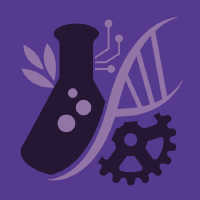Topic Editors



2. Instituto Universitario de Investigación del Agua, Cambio Climático y Sostenibilidad (IACYS), Avda de la Investigación s/n, 06006 Badajoz, Spain




Advanced Oxidation Processes: Applications and Prospects, 2nd Volume
Topic Information
Dear Colleagues,
Currently, advanced oxidation technologies have begun to be taken seriously as green technologies and are highly efficient in terms of final yields since they are chemical reactions that can be controlled and directed according to the end goals in each case. Thus far, they have been considered emerging technologies to be of little application at the industrial level as they are commonly considered relatively expensive compared with conventional technologies. This consideration is not entirely true since, in many cases, the investment and operating costs of these technologies can be low as they are simple technologies, and with the right choice of materials and equipment, they can be attractive technologies from an industrial and economic point of view. Regarding operating costs (chemicals and energy costs), these costs depend on the geographical area where the industrial plant is finally located. The degree of previous optimization of these technologies is also important in each case, which usually implies a notable reduction in costs, especially when considering the circular economy of the processes in which these technologies are applied.
Advanced oxidation technologies can be used individually or incorporated into more complete processes or bioprocesses. In this sense and as a non-limiting example, they can be applied in wastewater treatment as a main technology/for pretreatment or as a final operation for the adjustment of the final percentages required by current legislation.
The editors of the first edition of this topic are pleased to launch the second edition, which is a continuation of the work presented in the first edition given the good reception and the great interest shown by the high level of authors’ participation. This second edition is being launched to give new authors a chance to disclose and publish their results, and previous authors who participated in the first edition are invited to contribute again with new results and technologies.
This second volume is a multidisciplinary topic of the journals Catalysts, Processes, Sci, and Water; the aim is to extend our knowledge of the current state of the art related to current and possible future applications of advanced oxidation processes.
Prof. Dr. Gassan Hodaifa
Prof. Dr. Antonio Zuorro
Dr. Joaquín R. Dominguez
Prof. Dr. Juan García Rodríguez
Prof. Dr. José A. Peres
Dr. Zacharias Frontistis
Dr. Mha Albqmi
Topic Editors
Keywords
- natural and artificial photolysis
- ozonation
- Fenton reaction
- photo-Fenton
- sonolysis
- elecro-oxidation
- oxidants
- catalysts
- nanoparticles for oxidation
- economical assesment of advanced oxidation processes
- process modelling
- life cycle assesment
- environmental footprint
- hybrid chemical and biological processes
- green technologies
- industrial application
Participating Journals
| Journal Name | Impact Factor | CiteScore | Launched Year | First Decision (median) | APC | |
|---|---|---|---|---|---|---|

Catalysts
|
3.9 | 6.3 | 2011 | 14.3 Days | CHF 2700 | Submit |

Processes
|
3.5 | 4.7 | 2013 | 13.7 Days | CHF 2400 | Submit |

Sci
|
- | 3.1 | 2019 | 47.7 Days | CHF 1200 | Submit |

Water
|
3.4 | 5.5 | 2009 | 16.5 Days | CHF 2600 | Submit |

MDPI Topics is cooperating with Preprints.org and has built a direct connection between MDPI journals and Preprints.org. Authors are encouraged to enjoy the benefits by posting a preprint at Preprints.org prior to publication:
- Immediately share your ideas ahead of publication and establish your research priority;
- Protect your idea from being stolen with this time-stamped preprint article;
- Enhance the exposure and impact of your research;
- Receive feedback from your peers in advance;
- Have it indexed in Web of Science (Preprint Citation Index), Google Scholar, Crossref, SHARE, PrePubMed, Scilit and Europe PMC.
Related Topic
- Advanced Oxidation Process: Applications and Prospects (28 articles)

